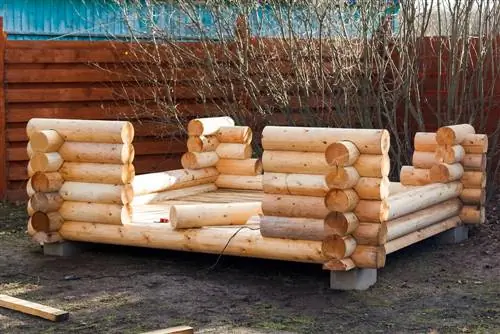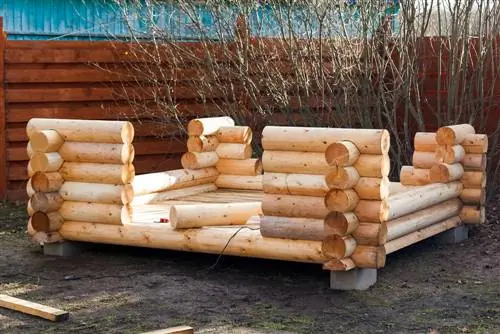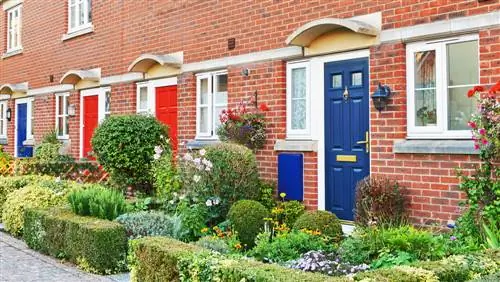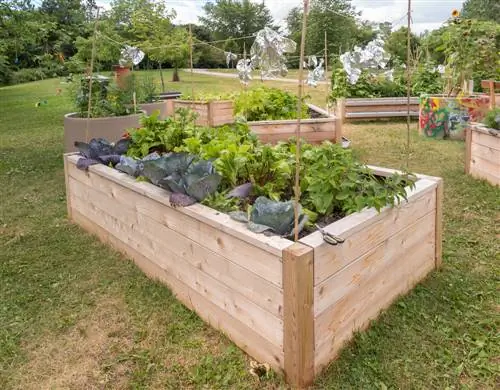- Author admin [email protected].
- Public 2023-12-16 16:46.
- Last modified 2025-01-23 11:21.
Garden houses should fit well into the green area. That's why wood remains the most popular building material for arbors. The ecological building material is alive and fits perfectly into the natural environment thanks to its attractive grain. However, you have to pay attention to which type of wood you use, as not all woods are equally suitable.

Which wood is suitable for a garden house?
Wood species such as pine, spruce and larch are best suited for a garden house. Pine and spruce are inexpensive, but must be protected from weathering. Larch forms an attractive silver-gray shimmer when exposed to the weather and is extremely resilient.
The most commonly used types of wood are:
- Pine
- Spruce
- Larch.
Cost-effective pine
Pine is currently the cheapest wood you can use to build the arbor. The slightly reddish-yellow colored material is easy to process and impresses with its interesting grain. However, the pine wood, which is not quite as hard, absorbs liquid, so you cannot do without varnishing or glazing with this material for the garden house.
Extremely popular: spruce
Spruce wood is also relatively inexpensive and easy to process. When stored, the almost white wood turns brown to gray. It should therefore be protected from weathering with a glaze or varnish.
Attractive weathering larch
Larch is not entirely cost-effective. For this reason, many arbor owners only use this wood for the exterior facade. Unlike spruce and pine, larch forms a beautiful, silver-gray shimmer when exposed to the weather, as is familiar from Black Forest houses. This softwood does not necessarily need to be painted.
Make sure the wall is thick enough
Not only the type of wood is important for the stability of the house, the wall thickness also plays a crucial role. If you want to use the hut as more than just a place to store garden tools and the lawnmower, the wall thickness should be at least 30 millimeters. The thicker the wall, the more robust the wood is and it will not warp as quickly. From a thickness of 40 millimeters you can also take advantage of the pleasant air-conditioning properties of wood.
Tip
Also make sure that the wood used comes from Northern Europe. Here the trees grow slower due to the cold, which makes the material particularly resistant and harder.






